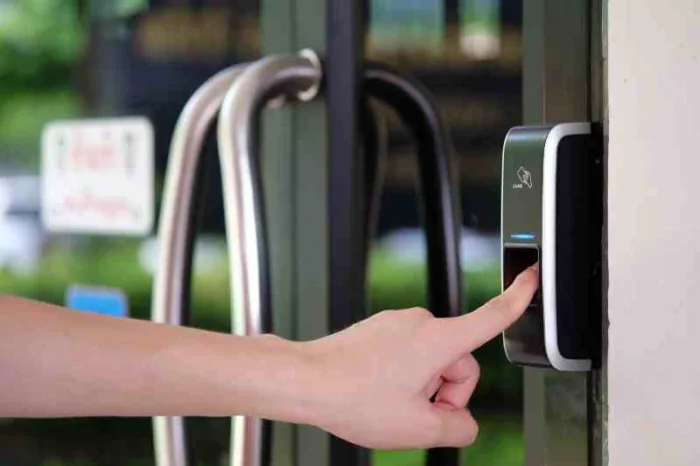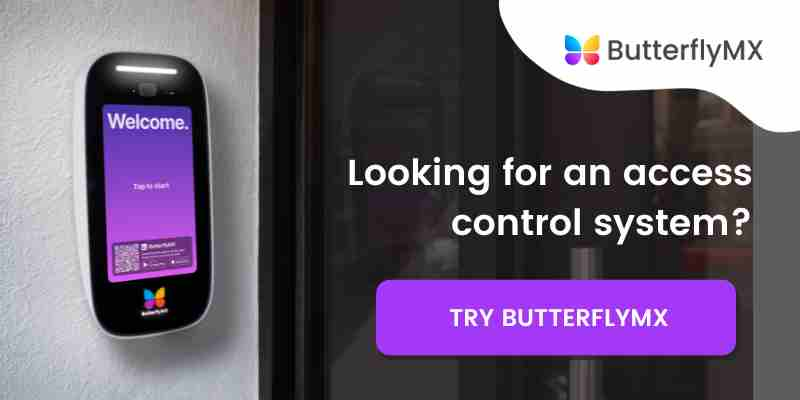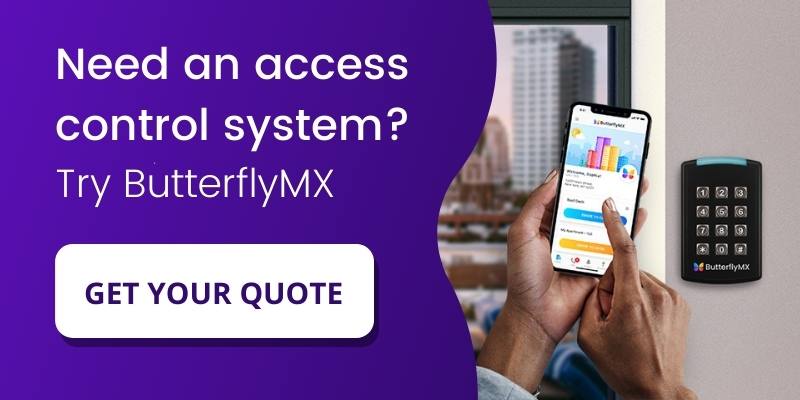Key takeaways:
- Fingerprint access control systems use unique biometric identifiers, making them more secure than traditional keys, which can be lost or shared
- Residents and staff can enter without physical keys, reducing the risk of lockouts and the need for key replacements.
- These types of systems require physical contact with scanners, potential issues with unreadable fingerprints due to scars or calluses, and the requirement to register each user’s fingerprint, which can be time-consuming in large buildings.
- Fingerprint systems are not ideal for visitors or temporary guests, as they cannot use their fingerprints for entry, necessitating alternative access methods.
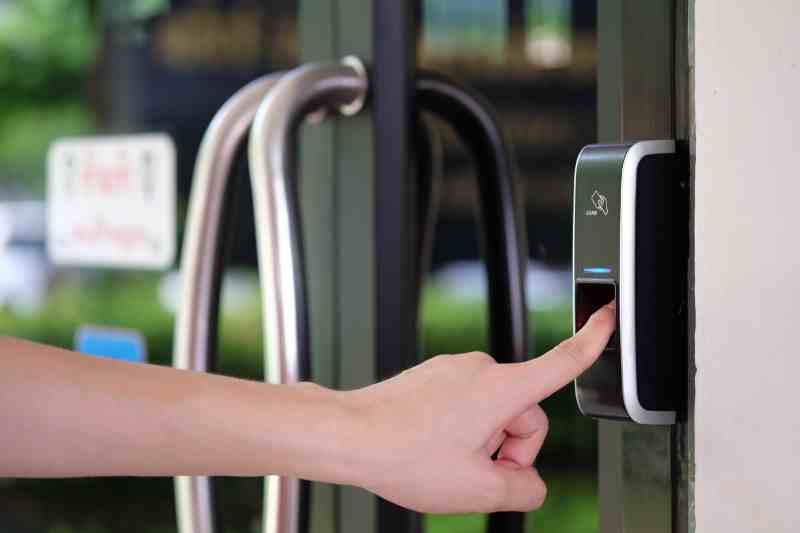
A lot goes into managing a multifamily building, but nothing’s as important as ensuring secure access for residents, staff, and guests at your property. Looking to modernize your old access control system with a keyless entry method? Fingerprint access control is a biometric access control system that uses tenants’ fingerprints as credentials.
Read on to learn what fingerprint access control is and how it works. Then, explore the pros and cons of implementing a fingerprint-based access control system at your building. Finally, discover how to choose the best access control system for your property.
In this post, we cover:
- What is fingerprint access control?
- Is fingerprint access secure?
- Pros and cons of fingerprint access control
- Choosing the best access control system for your property
What is fingerprint access control?
A fingerprint access control system uses your fingerprint as a credential to open doors. To do this, the reader scans your fingerprint and compares it against the prints registered in the building’s access control system. The door will unlock and let you in if there’s a match.
As a result, biometric access control systems like fingerprint readers reduce the need for physical keys in your building. But how do they work?
Let’s assess the key components of a fingerprint access control system:
- Fingerprint reader. The reader scans your fingerprint and compares it against what is already stored in the system.
- Door controls. Controls and powers the biometric access control devices at your door.
- Electronic or magnetic lock. The electronic or magnetic lock releases when an authorized resident or staff member scans their print and the system grants access.
- Biometric access control software. The system’s software stores fingerprint data, allows administrators to add and remove residents and keeps a log of everyone that enters your building.
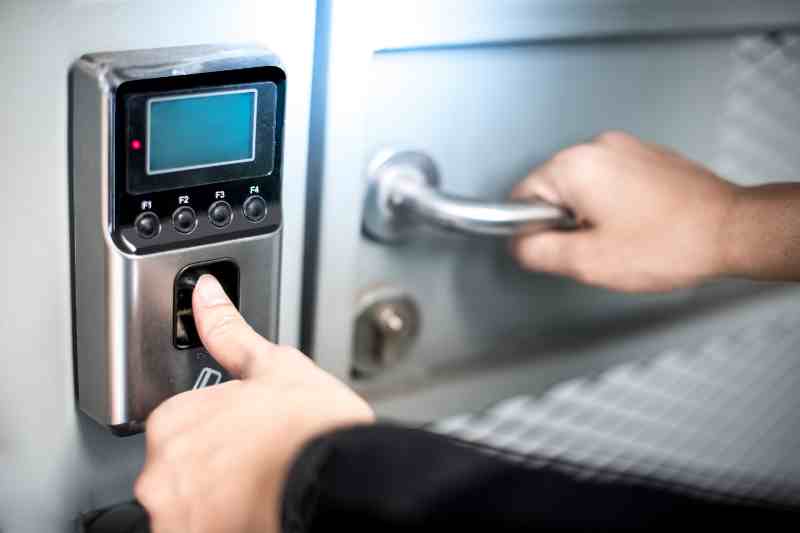
Is fingerprint access secure?
Fingerprint access is secure because fingerprints are nearly impossible to duplicate and can’t be lost or stolen like physical keys. Moreover, you won’t have to worry about residents sharing their keys, cards, or codes with unauthorized guests.
Because biometric access control is more secure than most systems, a variety of high-security buildings use fingerprint access control as their preferred entry method.
Secure facilities that use biometric access control include:
- Research labs. Labs that require elevated security to protect sensitive materials often use fingerprint locks at doors throughout the building. This technology enhances secure access for researchers, scientists, and lab technicians.
- Data centers. Fingerprint access control offers secure authentication, so it’s regularly used at data centers that require elevated security measures for safeguarding records and documents.
- Industrial facilities. Facilities like industrial warehouses, manufacturing buildings, and storage facilities often use biometric access control to protect assets at their properties.
Learn how ButterflyMX works:
Pros & cons of fingerprint access control systems
Biometric access control technology offers a modern and convenient way to grant access to your building, but it has limitations.
Let’s assess the benefits and drawbacks of fingerprint reader access control:
Benefits of fingerprint access control
- Impossible to lose. Everyone has a fingerprint, so it’s a convenient credential to grant access to residents and staff. Additionally, residents and staff members won’t have to fumble with physical keys. So, it’s a quick and easy way to open doors securely.
- Most affordable biometric system. Fingerprint access door locks are usually more affordable than other types of biometric systems like iris scanners or voice recognition.
- Don’t have to replace keys. The cost of replacing lost or stolen access cards and physical keys can add up over time, especially in large buildings. As a result, you won’t have to worry about resident lockouts due to lost keys.
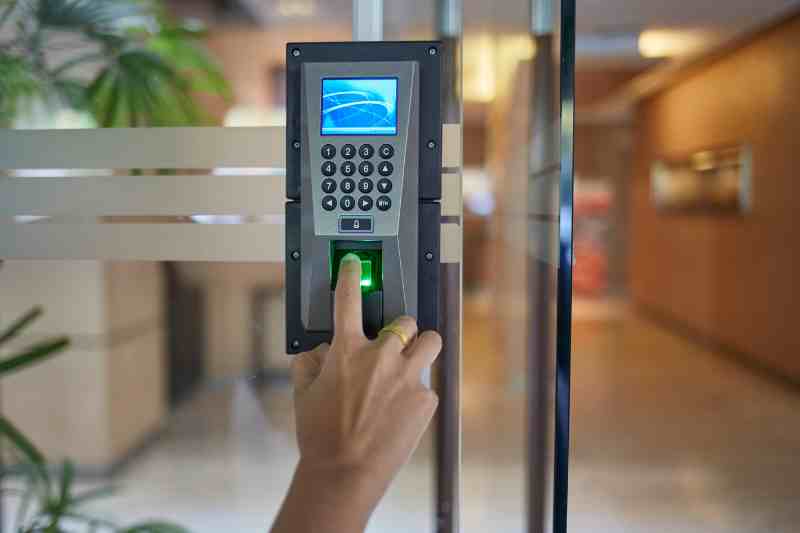
Disadvantages of fingerprint access control
- Not touchless. Because fingerprint door locks, also called touch ID door locks, use your fingerprint as the credential, you have to touch the reader to gain access. This may not be ideal for residents in large, high-traffic multifamily buildings — especially during flu season.
- May not work. If a resident or staff member has calluses or scars on their fingertips, the scanner may not be able to read their fingerprint.
- Must scan everyone’s fingerprint. You’ll have to take the time to schedule every resident and staff member to input their fingerprint into the system. This isn’t ideal for large, multifamily buildings because it could require registering hundreds of fingerprints.
- Not great for visitors. Vendors, installers, service providers, and guests won’t be able to use their fingerprints as temporary access credentials. So, they’ll need a key card, code, fob, or key to enter the building anyway.
- Not ideal for gates. Biometric access control works best for doors, so you’ll need a separate access control system for the gates at your property.
Choosing the best access control system for your property
Assessing your building’s needs is crucial for choosing the best access control system. If you want to modernize your property access with a keyless entry method, consider a mobile-based access control system like ButterflyMX.
A mobile access control solution allows residents to use their smartphones to open doors. Additionally, if a resident loses their phone, they can use a unique PIN code to open the door instead. So, you won’t have to worry about dealing with lockouts or issuing new keys to residents.
What’s more, if you own or manage a gated community, ButterflyMX’s video intercom system can streamline access to the gates at your property. This allows guests to launch two-way video calls with residents to request access easily. Plus, residents can verify a visitor’s identity before letting them into your building.
